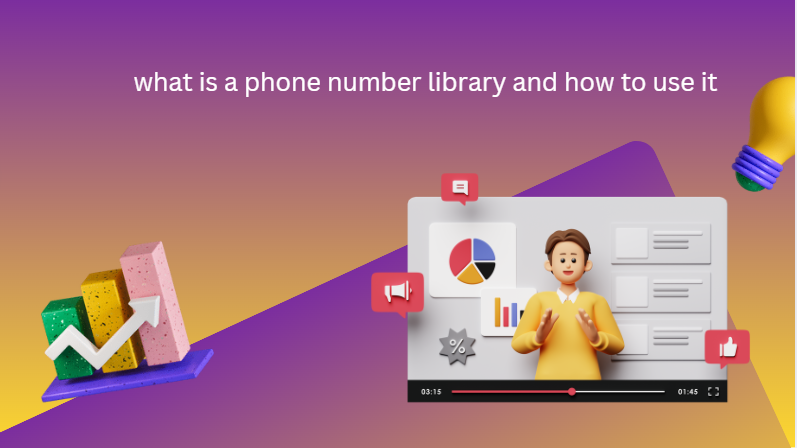The Structure and Components of a Phone Number Library
To effectively use a phone number library, one must first understand its structure and core components. Typically, a well-designed phone number library will not be just a column of numbers; instead, it will be an intelligently designed dataset that contains multiple fields. These fields may include the contact’s full name, company affiliation, geographic region, contact preferences, communication history, and notes about previous interactions. Some advanced libraries integrate with CRM systems and can automatically update or cross-reference contact details from other databases, ensuring accuracy and reducing duplication. The phone number library library may also include segmentation tags, which allow users to group contacts based on shared characteristics, such as customer type, industry, purchase history, or engagement level. For example, a retail business may tag customers as “VIP,” “First-Time Buyer,” or “Inactive Customer,” and use these tags to send tailored messages. Furthermore, a phone number library often contains built-in compliance tools, such as indicators for do-not-call lists or opt-in/opt-out status for marketing campaigns. This structured approach not only improves operational efficiency but also ensures that communications remain targeted and respectful, reducing the risk of wasting resources or violating regulations.

Building and Populating Your Phone Number Library
Constructing a robust phone number library is not a matter of merely copying numbers from random sources. Instead, it requires a strategic approach to data collection, verification, and ongoing maintenance. The first step is sourcing the numbers ethically and legally—through customer sign-ups, business inquiries, loyalty programs, online forms, or networking events. Purchased lists may be tempting, but they often come with outdated, inaccurate, or non-compliant data, which can harm both efficiency and reputation. Once you have collected numbers, you should validate them using specialized tools that check for formatting errors, invalid prefixes, or inactive lines. The formatting step is especially important if you are dealing with international contacts, as different countries have unique dialing codes and number structures. After verification, the numbers should be enriched with additional information to make them more valuable—for example, linking them with names, locations, and preferences. Maintaining a clean and current library requires periodic audits to remove duplicates, update inactive numbers, and ensure compliance with privacy regulations such as GDPR or TCPA. In addition, automation tools can help you synchronize your library with other platforms, ensuring that updates in one system reflect across all databases without manual duplication of effort.
Best Practices for Using a Phone Number Library Effectively
Once you have a well-structured and accurate phone number library, the next step is learning how to use it effectively to achieve your communication goals. One of the most important practices is segmentation—grouping contacts according to their needs, preferences, or behaviors. This allows you to craft personalized messages that resonate with each audience, increasing the likelihood of engagement. For example, a healthcare provider might send appointment reminders only to patients with upcoming visits, while a retailer might send promotional offers to high-value customers. Scheduling and timing also play a major role; sending messages at times when recipients are most likely to be available can significantly improve response rates. Additionally, integration with CRM systems, email marketing tools, and SMS platforms can streamline communication by allowing you to send bulk messages or automated sequences directly from the library. Monitoring and analyzing the results of campaigns—such as delivery rates, open rates, and response times—can help you refine your strategy and improve performance over time. Finally, security is paramount; since phone number libraries often contain personal and sensitive information, they should be stored securely, with restricted access, encryption, and compliance measures in place to prevent unauthorized use.
Future Trends and Innovations in Phone Number Libraries
The evolution of phone number libraries is being shaped by technological advancements, regulatory changes, and the increasing demand for personalized communication. Artificial intelligence and machine learning are beginning to play a significant role in enhancing these libraries, enabling predictive analytics to determine the best times and methods for contacting individuals. AI can also help detect and flag suspicious or fraudulent numbers, improving data quality and security. Cloud-based phone number libraries are becoming more popular, allowing teams to access and update information in real time from any location, which is particularly beneficial for remote and hybrid work environments. Additionally, as regulations around data privacy tighten, phone number libraries will likely include more automated compliance features, such as real-time opt-out processing and built-in consent tracking. Integrations with omnichannel marketing platforms will further enable businesses to coordinate phone, SMS, email, and even social media outreach from a single database. Ultimately, the future points toward more intelligent, secure, and user-friendly phone number libraries that not only store data but actively help organizations connect with people in meaningful and compliant ways. By staying ahead of these trends, businesses can ensure that their phone number library remains a valuable asset for years to come.